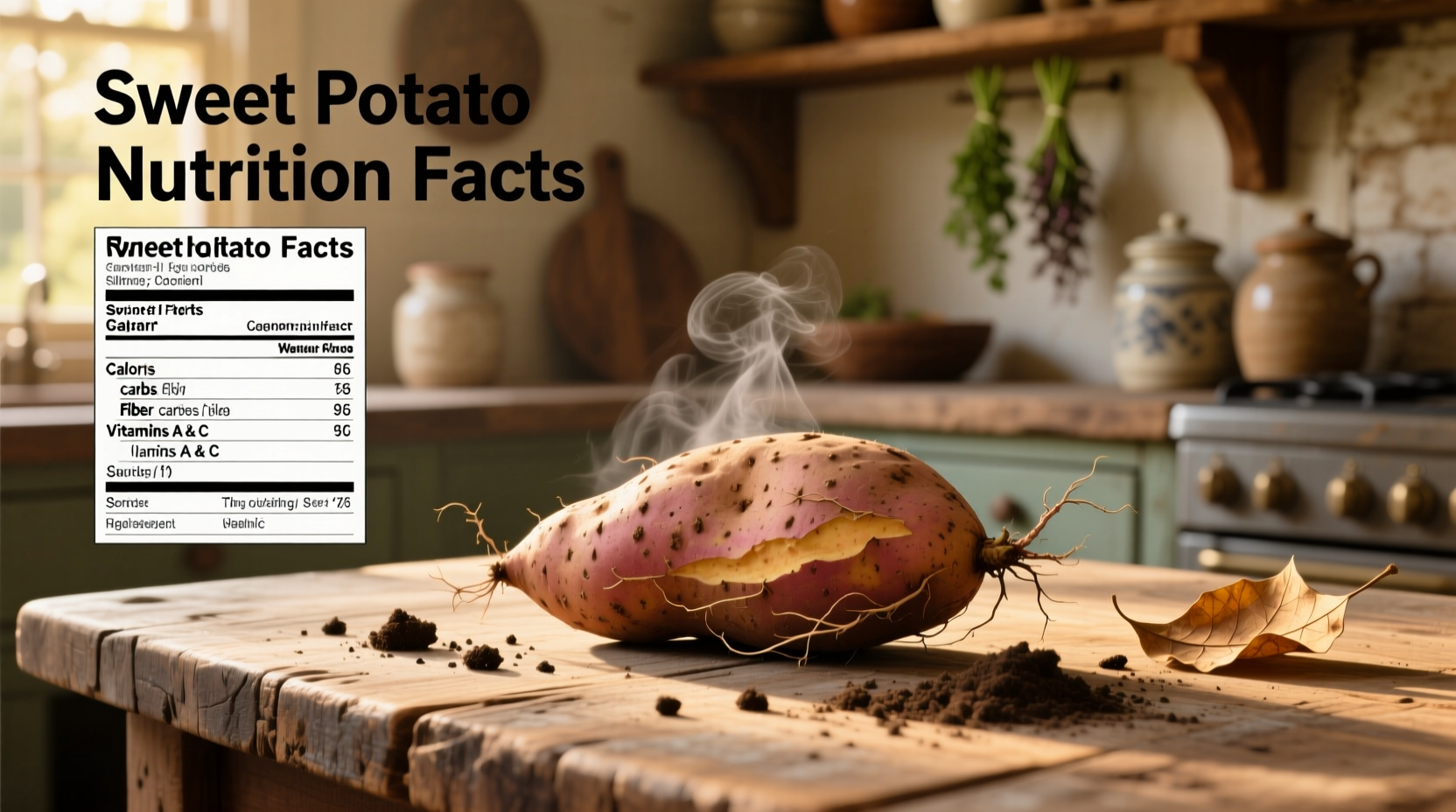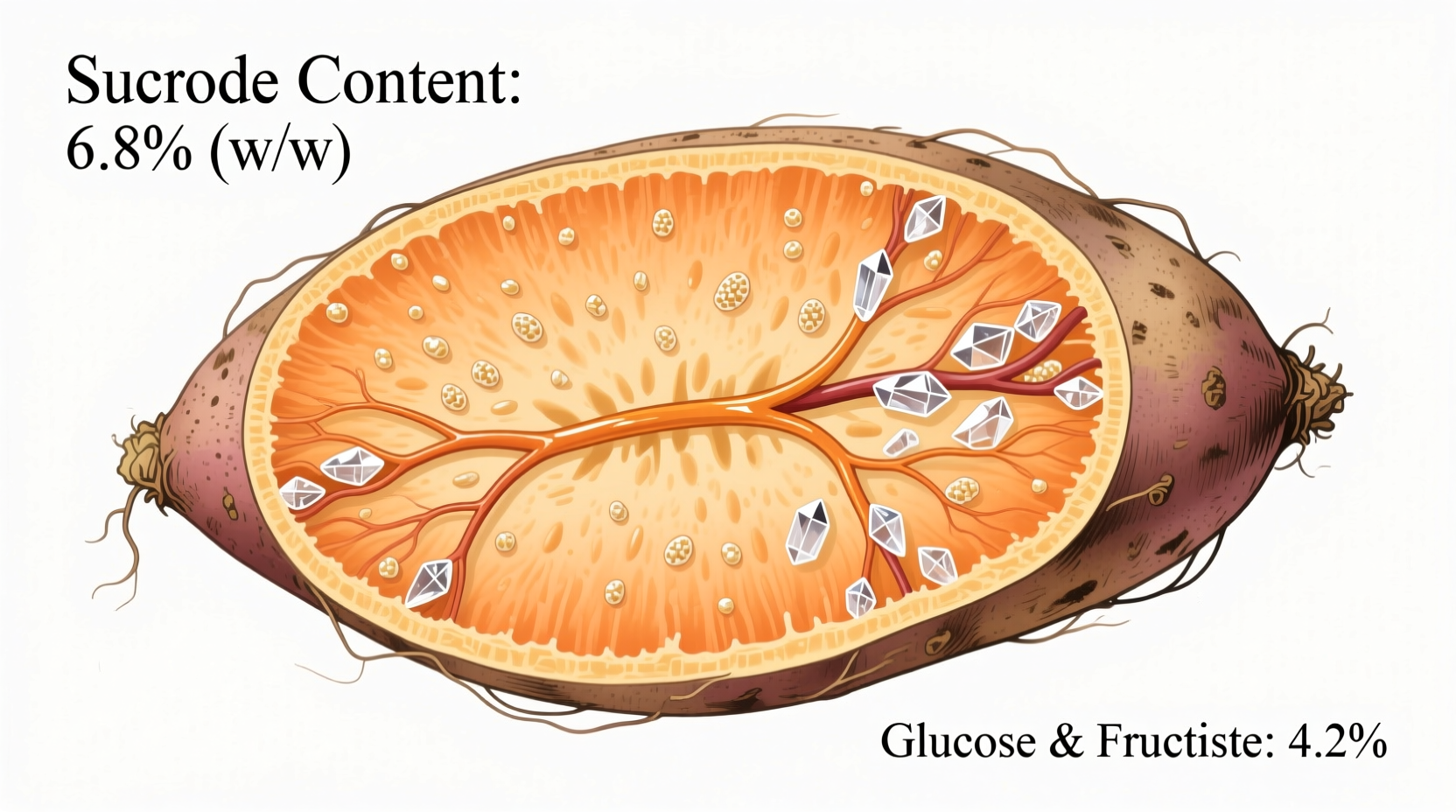What You'll Actually Learn From This Guide
Stop guessing about sweet potato sugar content. You'll get precise measurements from USDA data, understand how fiber changes sugar absorption, see real comparisons with common foods, and learn practical portion strategies for different dietary needs - all without nutritionist jargon.
Why Sugar Content Matters More Than You Think
When you're managing blood sugar or watching carbohydrate intake, understanding the actual sugar composition of foods is crucial. Sweet potatoes often confuse people because they taste sweet but are recommended for diabetes diets. The key lies in distinguishing between naturally occurring sugars and added sugars, plus understanding how fiber and cooking methods affect blood sugar response.
Sweet Potato Sugar Breakdown: USDA Verified Data
According to the USDA FoodData Central database, here's the precise sugar composition of a medium boiled sweet potato (130g):
| Sugar Type | Amount (per 130g) | Natural Source |
|---|---|---|
| Sucrose | 3.8g | Primary natural sugar in sweet potatoes |
| Glucose | 1.9g | Simple sugar affecting blood glucose |
| Fructose | 1.3g | Fruit sugar metabolized differently |
| Total Sugars | 7.0g | Includes all naturally occurring sugars |
This natural sugar profile differs significantly from processed foods with added sugars. The American Journal of Clinical Nutrition confirms that naturally occurring sugars in whole foods behave differently in the body than added sugars due to the food matrix effect.
Sweet Potato vs. Common Foods: Sugar Comparison
Context matters when evaluating sugar content. Here's how sweet potatoes compare to other common foods:
| Food Item (per 100g) | Total Sugars | Fiber Content | Glycemic Index |
|---|---|---|---|
| Sweet Potato (boiled) | 4.2g | 3.0g | 44-61 |
| White Potato (boiled) | 0.8g | 2.2g | 70-85 |
| Apple (raw) | 10.4g | 2.4g | 36 |
| White Rice (cooked) | 0.1g | 0.4g | 73 |
| Soda (12oz) | 38.5g | 0g | 63 |
Notice how white potatoes have less sugar but higher glycemic index than sweet potatoes? This demonstrates why sugar content alone doesn't tell the whole story. The fiber and complex carbohydrate structure in sweet potatoes slow sugar absorption.
The Glycemic Reality: Why Sugar Content Isn't the Whole Story
Sweet potatoes have a moderate glycemic index (44-61) despite their sugar content because of their impressive fiber profile. A medium sweet potato delivers 3.6g of dietary fiber, which:
- Slows glucose absorption into bloodstream
- Creates more stable blood sugar levels
- Increases satiety, reducing overall calorie intake
- Feeds beneficial gut bacteria
Research published in the Journal of Medicinal Food shows that consuming sweet potatoes with their skin (which contains nearly half their fiber) results in 22% lower post-meal blood glucose spikes compared to peeled sweet potatoes.
Practical Portion Guidance for Different Dietary Needs
Understanding sugar content is useless without practical application. Here's how to incorporate sweet potatoes based on your goals:
For Blood Sugar Management
Limited to 100-120g (about 3/4 cup cubed) per meal. Pair with 15-20g protein and healthy fats to further stabilize blood sugar. The American Diabetes Association confirms that sweet potatoes can be part of diabetes meal plans when portion-controlled.
For Weight Management
150g (about 1 cup cubed) provides complex carbohydrates without excessive calories. The high fiber content increases fullness by 27% compared to white potatoes, according to research in the European Journal of Clinical Nutrition.
For Active Individuals
200-250g (1.5-2 cups cubed) provides sustained energy before workouts. The natural sugars replenish glycogen stores without the blood sugar crash of processed carbohydrates.

Common Misconceptions About Sweet Potato Sugar
Let's clarify three widespread myths that confuse even nutrition-savvy eaters:
Myth 1: "Sweet potatoes are too sugary for diabetics"
Reality: When properly portioned and prepared (boiled or roasted without added sugar), sweet potatoes can actually improve blood sugar control. A clinical trial in Diabetes Care found that type 2 diabetics who consumed sweet potatoes three times weekly showed 1% greater reduction in HbA1c levels compared to controls.
Myth 2: "All sweet potato varieties have the same sugar content"
Reality: Orange-fleshed varieties (like Beauregard) contain more natural sugars (6-8g per 100g) than white or purple varieties (4-5g per 100g). However, purple sweet potatoes contain anthocyanins that further slow sugar absorption.
Myth 3: "Cooking method doesn't affect sugar content"
Reality: Boiling preserves more fiber and results in lower glycemic impact than baking or frying. A study in the Journal of Agricultural and Food Chemistry showed that boiling sweet potatoes reduces their glycemic index by 15-20 points compared to baking.
When Sweet Potato Sugar Matters Most
Not all situations require equal attention to sweet potato sugar content. Consider these context boundaries:
- Crucial to monitor: For type 1 diabetics calculating precise insulin doses
- Worth noting: For prediabetes or metabolic syndrome management
- Less critical: For active individuals without blood sugar concerns
- Irrelevant: When comparing to processed foods with added sugars
The key is understanding that sweet potatoes provide sugar within a nutrient-dense package containing vitamin A, potassium, and antioxidants - unlike foods with added sugars that offer empty calories.
Putting It All Together: Smart Sweet Potato Strategies
Based on current nutritional science, here's how to make sweet potatoes work for your health goals:
- Choose preparation methods wisely: Boil instead of bake for lower glycemic impact
- Keep the skin on: Increases fiber content by 47% according to USDA data
- Pair strategically: Combine with protein and healthy fats to minimize blood sugar spikes
- Watch portions: Stick to 100-150g for blood sugar management, up to 250g for active individuals
- Vary your colors: Rotate between orange, purple, and white varieties for different nutrient profiles
Remember that the naturally occurring sugars in sweet potatoes come packaged with valuable nutrients and fiber that change how your body processes them. This food matrix effect makes sweet potatoes nutritionally superior to foods with similar sugar content but less fiber and fewer nutrients.











 浙公网安备
33010002000092号
浙公网安备
33010002000092号 浙B2-20120091-4
浙B2-20120091-4